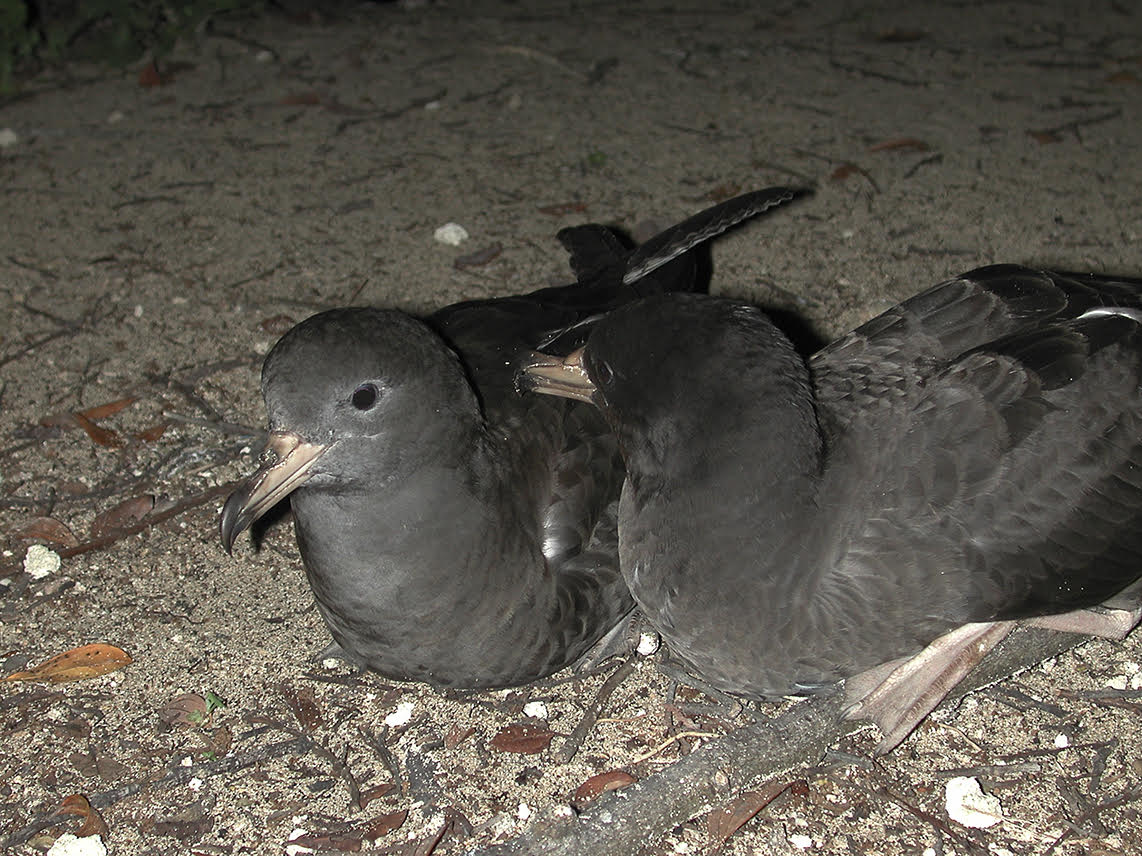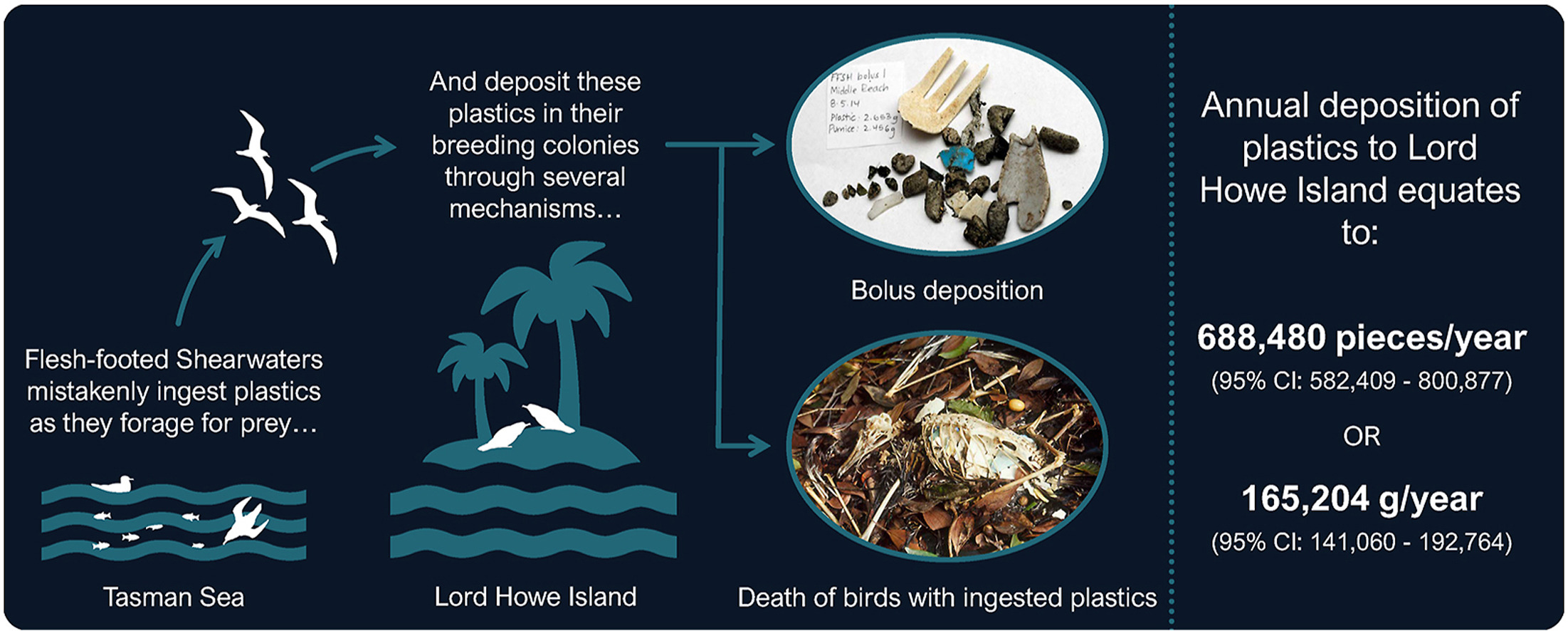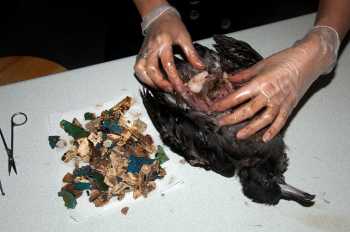
A Flesh-footed Shearwater pair on Lord Howe Island, photograph by Ian Hutton
Megan Grant (Institute for Marine and Antarctic Studies, University of Tasmania, Newnham, Australia) and colleagues have published in the journal Environmental Pollution on estimating how many pieces of plastic Flesh-footed Shearwaters Ardenna carneipes import to Lord Howe Island.

The publication's graphical abstract
The paper’s abstract follows:
“Seabirds are apex predators in the marine environment and well-known ecosystem engineers, capable of changing their terrestrial habitats by introducing marine-derived nutrients via deposition of guano and other allochthonous inputs. However, with the health of the world’s oceans under threat due to anthropogenic pressures such as organic, inorganic, and physical pollutants, seabirds are depositing these same pollutants wherever they come to land. Using data from 2018 to 2020, we quantify how the Flesh-footed Shearwater (Ardenna carneipes) has inadvertently introduced physical pollutants to their colonies on Lord Howe Island, a UNESCO World Heritage site in the Tasman Sea and their largest breeding colony, through a mix of regurgitated pellet (bolus) deposition and carcasses containing plastic debris. The density of plastics within the shearwater colonies ranged between 1.32 and 3.66 pieces/m2 (mean ± SE: 2.18 ± 0.32), and a total of 688,480 (95% CI: 582,409–800,877) pieces are deposited on the island each year. Our research demonstrates that seabirds are a transfer mechanism for marine-derived plastics, reintroducing items back into the terrestrial environment, thus making seabird colonies a sink for plastic debris. This phenomenon is likely occurring in seabird colonies across the globe and will increase in severity as global plastic production and marine plastic pollution accelerates without adequate mitigation strategies.”

Plastic being removed from a Flesh-footed Shearwater stomach, photograph by Ian Hutton
The Near Threatened Flesh-footed Shearwater was identified in 2019 as a possible candidate for listing within the Agreement.
Grant, M.L., Lavers, J.L., Hutton, I. & Bond, A.L. 2021. Seabird breeding islands as sinks for marine plastic debris. Environmental Pollution doi.org/10.1016/j.envpol.2021.116734.

 English
English  Français
Français  Español
Español